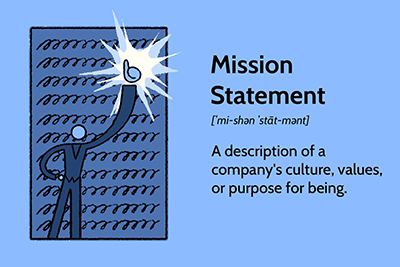A mission statement is a formal summary of a company’s core principles, values, and strategic intentions, articulated at an abstract level to serve as a guiding framework for decisions and behavior throughout the organization. It functions as a compass that informs corporate culture, strategy, and operations.
Typically authored and declared binding by management, a mission statement defines how a company sees itself and how it aims to operate. However, Herbst (2006) recommends involving employees in the development process to promote alignment and foster a stronger sense of ownership across the workforce.
Content and Purpose
The content of a mission statement is always company-specific, shaped by leadership style, industry context, and organizational goals. According to Bleicher (1991), a complete mission statement should go beyond abstract corporate goals to include:
-
Leadership principles
-
Employer-employee relations
-
Corporate values and HR philosophy
The HR department plays a central role in defining these principles and ensuring their integration into the broader mission statement. Importantly, HR policies and decisions should be strategically aligned with the mission statement to reinforce its practical relevance.
Strategic Functions
A well-crafted mission statement delivers several key benefits:
-
Internal coordination: It provides employees and managers with a consistent decision-making framework, reducing ambiguity and streamlining action across departments.
-
Corporate identity: It builds a unified sense of purpose and belonging among employees, contributing to a strong and cohesive corporate culture.
-
External signaling: It communicates the company’s ethos and priorities to external stakeholders such as customers, investors, and suppliers.
Because it serves as both a cultural anchor and a strategic tool, a mission statement must be precise enough to guide even difficult decisions, not just serve as a symbolic statement.
Common Pitfalls
Despite its advantages, mission statements can face the following challenges:
-
Overgeneralization, which leads to vague or non-binding guidance
-
Excessive specificity, which may hinder adaptability and flexibility
-
Cultural misalignment, particularly in multinational firms, where employee values may differ due to sociocultural diversity
-
Instability, if the mission statement is revised too often, leading to confusion and loss of credibility
For long-term effectiveness, the mission statement should be integrated into HR development efforts and communicated consistently, especially during periods of change or uncertainty. It should be a strategic constant, not a “fair-weather document.”
« Back to Glossary Index





![15 Employee Offboarding Templates That Save Hours of HR Time [Free Downloads] 15 Employee Offboarding Templates That Save Hours of HR Time [Free Downloads]](https://i1.wp.com/www.hrcloud.com/hubfs/Header.png?w=150&resize=150,100&ssl=1)
